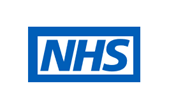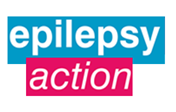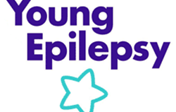When assessing the risks and benefits of a child’s daily activities, you will need to decide what the child may and may not do. Whenever possible, the child should be involved in these decisions. Every situation is different and when assessing the risks you should consider the answer to the following questions.
- How old is the child?
- How capable is the child?
- How often does the child have seizures?
- Do they get a reliable warning prior to seizures occurring?
- What kind of seizures do they have?
- If they had a seizure during the activity, what consequences would there be?
However, the most important thing to remember is that children should be encouraged to live life as other children of their age and ability.
Bathing
Children should be supervised in the bath at all times to reduce the risk of drowning. Older children should be encouraged to use a shower, preferably one that has a seat. If a shower is not possible, and an older child refuses to have an adult in the bathroom with them, the bath water should be shallow and someone be outside the bathroom with the door unlocked. Shower screens should be made of plastic or a shower curtain used. A water temperature regulator is recommended and the temperature should be lowered to around 37- 40ºC to avoid scalding. When the bathroom, toilet or shower room is small, the doors should be rehung so they open outwards. This way the child will not be trapped behind the door if they have a seizure.
Safety in the home
 Furniture or fittings that have sharp edges to them should be moved or fit corner edge guards. Radiator and fire guards should preferably have round edges to them and should be secured in place. If possible, a cooker guard should be fitted and when cooking, the back hobs should be used as much as possible, with the handles of the pots turned inwards and away from the front of the cooker. All doors, low windows, glass-topped tables and glass-fronted cabinets should preferably be made with safety glass. Alternatively a protective film is available to cover the surfaces and reduce risk of injury. If a child has seizures at bedtime, bed guards may be useful. The best ones are made of a solid design, rather than the type that allow limbs to become trapped within the slats. Lowering a child’s bed will lessen injuries in case they fall out of bed. Putting a mattress on the floor beside the bed will cushion the child’s fall. If the child makes a noise when having seizures, a baby listening device can be used to alert you. Likewise there are also bed alarms that pick up movement and may be suitable for alerting you to certain types of seizures.
Furniture or fittings that have sharp edges to them should be moved or fit corner edge guards. Radiator and fire guards should preferably have round edges to them and should be secured in place. If possible, a cooker guard should be fitted and when cooking, the back hobs should be used as much as possible, with the handles of the pots turned inwards and away from the front of the cooker. All doors, low windows, glass-topped tables and glass-fronted cabinets should preferably be made with safety glass. Alternatively a protective film is available to cover the surfaces and reduce risk of injury. If a child has seizures at bedtime, bed guards may be useful. The best ones are made of a solid design, rather than the type that allow limbs to become trapped within the slats. Lowering a child’s bed will lessen injuries in case they fall out of bed. Putting a mattress on the floor beside the bed will cushion the child’s fall. If the child makes a noise when having seizures, a baby listening device can be used to alert you. Likewise there are also bed alarms that pick up movement and may be suitable for alerting you to certain types of seizures.
Safety and leisure
A competent swimmer should always swim with the child. If possible try to ensure they swim during the least crowded sessions and that the lifeguard is informed of their epilepsy. Somebody should be keeping an eye on the child at all times. If the child has seizures without warning, make sure they are escorted when climbing stairs and on escalators or, if available, use a lift. The child should wear a helmet when riding a bike, and avoid riding on busy roads. If they carry a mobile phone, key in your details and contact numbers under In Case of Emergency.
Specialist equipment suppliers
Many children need special equipment to help with daily living tasks, or to maximise their independence. If you are planning on purchasing some specialist equipment, be sure to get advice on what you need before you buy, your child’s health team should be able to help you. A paediatric occupational therapist should assess the child and advise about specific equipment that the child needs. Some of this equipment is available by contacting the child’s GP, or their local social services. You may be eligible for benefits or a grant to pay for equipment. Some can be obtained on a ‘sale or return’ basis, or a short or long term loan may be available for the National Health Service.
Living made easy for children is a service offered by the Disabled Living Foundation.
Inclusive Technology (opens link in new window) provides a wide range of special educational software and products, including special toys, communication aids, input switches, learning resources and equipment, speech and hearing amplifiers, music devices and more.


 Furniture or fittings that have sharp edges to them should be moved or fit corner edge guards. Radiator and fire guards should preferably have round edges to them and should be secured in place. If possible, a cooker guard should be fitted and when cooking, the back hobs should be used as much as possible, with the handles of the pots turned inwards and away from the front of the cooker. All doors, low windows, glass-topped tables and glass-fronted cabinets should preferably be made with safety glass. Alternatively a protective film is available to cover the surfaces and reduce risk of injury. If a child has seizures at bedtime, bed guards may be useful. The best ones are made of a solid design, rather than the type that allow limbs to become trapped within the slats. Lowering a child’s bed will lessen injuries in case they fall out of bed. Putting a mattress on the floor beside the bed will cushion the child’s fall. If the child makes a noise when having seizures, a baby listening device can be used to alert you. Likewise there are also bed alarms that pick up movement and may be suitable for alerting you to certain types of seizures.
Furniture or fittings that have sharp edges to them should be moved or fit corner edge guards. Radiator and fire guards should preferably have round edges to them and should be secured in place. If possible, a cooker guard should be fitted and when cooking, the back hobs should be used as much as possible, with the handles of the pots turned inwards and away from the front of the cooker. All doors, low windows, glass-topped tables and glass-fronted cabinets should preferably be made with safety glass. Alternatively a protective film is available to cover the surfaces and reduce risk of injury. If a child has seizures at bedtime, bed guards may be useful. The best ones are made of a solid design, rather than the type that allow limbs to become trapped within the slats. Lowering a child’s bed will lessen injuries in case they fall out of bed. Putting a mattress on the floor beside the bed will cushion the child’s fall. If the child makes a noise when having seizures, a baby listening device can be used to alert you. Likewise there are also bed alarms that pick up movement and may be suitable for alerting you to certain types of seizures.


